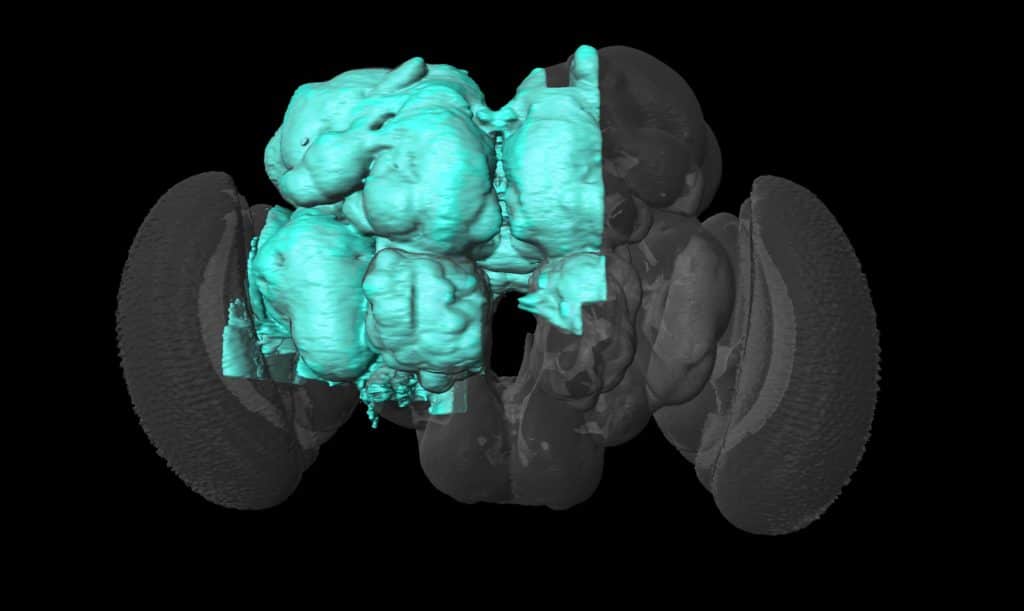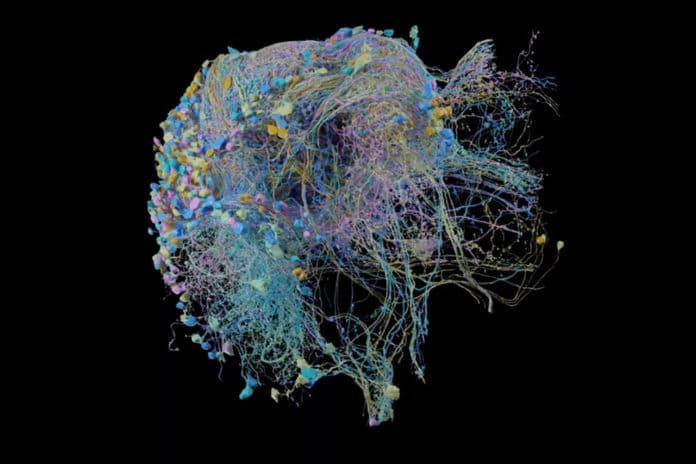The connectivity between brain cells plays a significant role in the function of the brain. In general, brain regions and their interactions can be modeled as complex brain network, which describes highly efficient information transmission in a brain. To study brain networks in detail, neuroscientists use various neuroimaging techniques.
Last year, in collaboration with Janelia Research Campus and Cambridge University, Google published a study that represents the automated reconstruction of an entire fruit fly brain. The study mainly focused on the individual shape of the cells. However, the findings didn’t reveal information about their connectivity.
In a new study along with the FlyEM team at HHMI’s Janelia Research Campus and several other research partners, Google released the “hemibrain” connectome, a highly detailed map of neuronal connectivity in the fly brain. Scientists also presented new methods and the complete circuitry of a large fraction of the brain of a much more complex animal, the fruit fly Drosophila melanogaster.
The hemibrain is derived from a 3D image of roughly half fly brain and contains verified connectivity between ~25,000 neurons that form more than twenty million connections.
Scientists primarily developed methods to stain the fly brain and then divide the tissue into separate 20-micron thick pieces, about a third the width of a human hair. Fruit flies are a common subject in connectomics as they generally have simple brains about the size of a poppy seed yet show complex practices like courtship dances.
These slices are then imaged by bombarding them with streams of electrons from a scanning electron microscope. The following information includes around 50 trillion 3D pixels, or voxels, which are processed using a calculation that follows the pathways of each cell.
It was impossible to create a connectome from this type of imaging data without precise 3D reconstruction of the neurons in a fly brain. Scientists thus started working on the fly brain data. After continuous experiments, scientists devised a method called flood-filling networks (FFNs).

The method was then applied to reconstruct the entire hemibrain dataset.
Flood-filling network is a method for automated segmentation that, similar to most previous efforts, uses convolutional neural networks, but contains, also a recurrent pathway that allows the iterative optimization and extension of individual neuronal processes. With FFNs, the hemibrain was proofread using hundreds of thousands of human hours: a two order-of-magnitude improvement.
Finally, after proofreading, the reconstruction was combined with automated synaptic detection to produce the hemibrain connectome.
Scientists manually labeled individual synapses and then trained neural network classifiers to automate the task.
Gerry Rubin, vice president of HHMI and executive director of Janelia, said, “It’s a necessary step in understanding how the brain works.”
